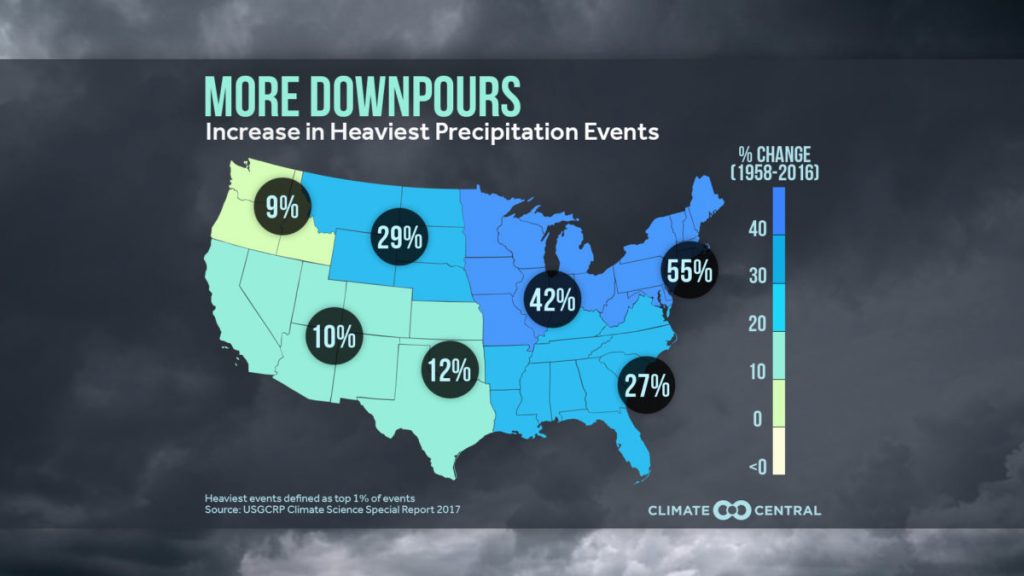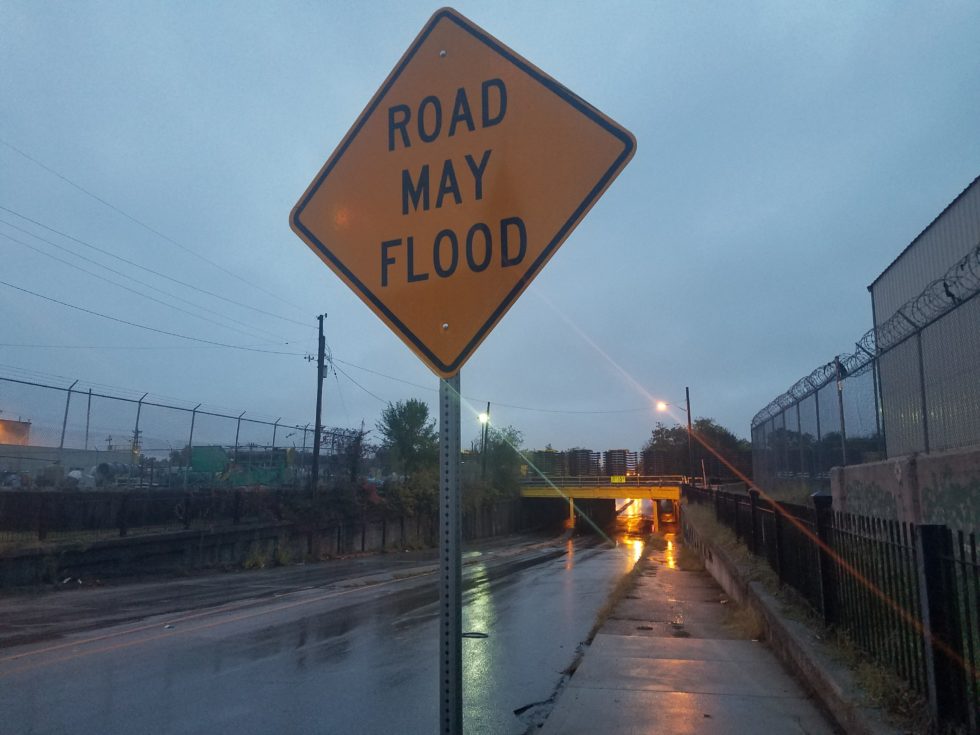News
Ohio Valley Mayors Aim For A Green Recovery Amid Coronavirus And Climate Change
By: Sydney Boles | Ohio Valley ReSource
Posted on:
PITTSBURGH, Pa. (OVR) — When newly elected President Donald Trump announced in 2017 that he would pull the United States out of the Paris Agreement on climate change, he said, “I was elected to represent the citizens of Pittsburgh, not Paris.”
The goal of the landmark Paris Agreement, which was signed in 2015 by 189 parties, is to limit global warming to below 2 degrees Celsius over pre-industrial levels.
Pittsburgh Mayor Bill Peduto had something to say about that. “I can assure you that we will follow the guidelines of the Paris Agreement for our people, our economy & future,” Peduto tweeted in the minutes following the announcement.
Extreme rainfall events have become more frequent in Pittsburgh, and according the Peduto, the city has had to spend roughly 10 times as much money repairing infrastructure damaged by floods and landslides as in years prior. “It got to the point where, just over a year ago, where a pothole ate a bus in downtown Pittsburgh,” the mayor said at a recent forum.
Under Peduto’s leadership, Pittsburgh has been at the forefront of a group of mayors doing their part to meet the global emissions reduction standards set forth in Paris. It’s a particularly notable commitment for mayors like Peduto, whose Ohio Valley cities’ industries powered the nation for decades on fossil fuels. In the long run, the mayors say, the long-term cost of inaction is far greater than the cost of investing in sustainability now. Even amid the coronavirus pandemic, these mayors are integrating environmental sustainability into their economic recoveries.

Cities Can’t Wait
In the overnight hours of May 27, 2019, three major tornadoes struck Dayton, Ohio and the surrounding suburbs in quick succession. The tornadoes ravaged homes, restaurants, churches, even a metro wastewater treatment plant. The thunderstorms that accompanied the tornadoes drenched the city in unprecedented rains. There were no fatalities, but 166 people were injured.
In addition to millions of dollars of damage, the spate of tornadoes tanked property taxes, leading to a loss of $248,000 for Dayton-area schools.
Dayton Mayor Nan Whaley said that kind of extreme weather never used to hit her city, at least, not until the era of climate change.
“We’ve got aging pipes and aging infrastructure, and we can’t keep up with the flooding,” said Mayor Tito Brown of Youngstown, Ohio, two hundred miles northeast of Dayton.
In Cincinnati, extreme rain has meant bigger landslides. “I think we’ve had three ‘hundred-year’ rains in the last five years,” Mayor John Cranley said. “We’ve had to invest, on an emergency basis, twice, in $30 million-plus projects [to fix] critical infrastructure and roadways.”
In Louisville, Kentucky, Mayor Greg Fischer declared a climate emergency last year amid youth climate protests. The same year, a report predicted that, without drastic action, the city would experience worsening severe storms and flooding, a climate as hot as Montgomery, Alabama, reduced air quality, and a higher incidence of tropical diseases like Zika and dengue. All of those would damage Louisville’s economy, reduce quality of life, and even pose threats to residents’ mental health.
To do its part to slow those harrowing trends, Louisville committed to cut emissions 80% by 2050.
“At the time, it was based on scientific goals, and that was pretty much the standard to meet the Paris Climate Agreement,” said Allison Smith, the brownfields program coordinator with Louisville’s Office of Advanced Planning and Sustainability. “Things have accelerated since then, so we recognize we need to speed that up.”
Environmental activists have critiqued the city for years for its idealistic rhetoric without enough follow-through. Louisville’s 2019 plan to reduce greenhouse gas emissions calls for lobbying the legislature to update building codes, but the same recommendation was in a 2009 plan, and little came of it.

These Ohio Valley mayors, all Democrats, are pushing for sustainability in states that have passed legislation disadvantaging renewable energy and subsidizing fossil fuel, and during a federal administration that has dismantled many environmental protections.
“Our biggest crisis is carbon footprint,” said Cincinnati’s Cranley. “So if we can reduce it by 50% by 2035 or whatever, that can’t happen unless we do it at the federal level. Even if the federal government said we wanted to do it, they would need the cooperation and collaboration of local governments around the country. We can do so much without a federal partner. I think we could do more with a federal partner,” Cranley continued, laughing, “But it really is up to us, and there’s no excuse not to act.”
Pandemic Disarray
In a September research paper in the National Tax Journal, economists estimated that American cities could be in for revenue shortfalls of 5.5% to 9% due to the coronavirus pandemic, with variation between cities depending on factors like dominant industries and the local severity of the pandemic. Collectively, 150 representative cities could face general revenue shortfalls of $55.3 billion in fiscal year 2021.
Louisville, Pittsburgh, Dayton, Cincinnati and Youngstown are all members of a nonprofit organization called Climate Mayors, which was founded in 2014 but which gained traction following Trump’s decision to pull the U.S. from the Paris Agreement.
“In the situation that we’re faced with right now, [mayors] recognize we are going to need to rebuild their economies, so how do we do so in a way that is sustainable and resilient to future shocks, and really does benefit the community in terms of health and economic growth?” said Climate Mayors director James Ritchotte.
Whaley told NPR in April that Dayton would furlough more than 400 city employees — 25% of its workforce — to cut costs.
But the push for sustainability couldn’t wait. Whaley said she looks for opportunities for cost-saving sustainability measures amid the economic devastation she’s facing. “The city, because of the budget issues, had to close two of our golf courses, and now we’re looking at those for solar array,” she told a Climate Mayors forum.
In Louisville, budget cuts led to the closure of the city’s sustainability office and its integration with the advanced planning division. At the time, Louisville climate activists told WFPL News that the change wouldn’t mean much, since sustainability efforts had long been underfunded anyway.
The city has been rocked by months of protests over racism in policing, but brownfields program manager Smith said she remains committed to prioritizing sustainability.
“Climate change is part of all of these issues. COVID is our current shock right now,” she said. “Our next shock is probably going to be climate-related, whether that’s another pandemic, which are often driven by climate change, or whether that’s huge weather events, or changes in the economy, changes in migration due to climate change.” Even as some people doubt that now is the time to focus on climate change, Smith continued, “We don’t have the luxury of putting climate change on the back burner.”
Respect Past, Embrace Future
Of the Climate Mayors’ 468 members, most are Democrats, and just under half represent cities with populations under 50,000.
One of those is Morgantown, a West Virginia college town of about 30,000 people. According to Mayor Ron Dulaney, who serves part-time, doing energy efficiency work in West Virginia, long a bastion of the coal industry and requires a bit of tactful messaging. “You almost have to tie it to the economic benefit in terms of the argument. It is such a politicized issue, unfortunately.”
For more than a decade, the city’s nonpartisan council has taken advice from a volunteer Green Team comprising local scientists, academics and concerned citizens.

Like many Ohio Valley communities, Pittsburgh, long a working-class steel town, suffered job loss and economic devastation decades ago. Peduto sees the greater Ohio Valley region remaining a hub for energy, but this time, green energy instead of coal.
“You need to show, especially to people outside our cities, that their communities can be sustained and prosper by being a part of this. You’re going to need to speak to people’s hearts and minds, and in order to speak to their hearts and minds, you’re going to need to speak to their pocketbooks,” Peduto said.
Climate Mayors director Ritchotte calls it respecting the past while embracing the future.
The Ohio Valley ReSource gets support from the Corporation for Public Broadcasting and our partner stations.

